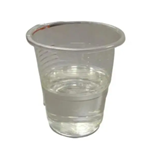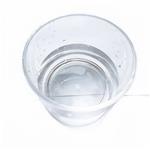Dibutylamine is a colorless liquid with anodor of ammonia. Molecular weight = 129.28; Boilingpoint = 159-161℃; Freezing/Melting point = - 61.9 to259℃; Flash point = 42-47℃; Autoignitiontemperature = 260℃. Explosive Limits: LEL = 1.1%;UEL—unknown. Hazard Identification (based on NFPA704 M Rating System): Health 3, Flammability 2,Reactivity 0. Slightly soluble in water.
n-Dibutylamine is a strong base and undergoes reactions with acids. It reacts with
carbon disulfide and carbon dioxide to form alkyl ammonium salts of dithiocarbamic
acid and carbamic acid, respectively.
n-Dibutylamine is nitrosated by nitrite at low pHs to form the mutagenic and
carcinogenic product, N-nitrosodibutylamine (Sithole and Guy 1986).
Dibutylamine is a colorless liquid with an odor
of ammonia.
Dibutylamine was employed as organocatalyst during the synthesis of 2-amino-3-cyano-4H-chromen-4-ylphosphonates via Knoevenagel, Pinner and phospha-Michael reactions. Di-n-butylamine (Dibutylamine) may be used to investigate the performance of a dry sampler, with an impregnated denuder in series with a glass fibre filter for airborne isocyanates. It was used in the preparation of 1M dibutylammonium phosphate buffer.
Dibutylamine is a secondary dialkylamine. It is a versatile intermediate with a variety of applications.
Dibutylamine is extensively used in palladium-catalyzed cross-coupling with aryl halides to synthesize arylamines, popularly known as Buchwald–Hartwig amination.
It can be used in the oxone-mediated annulation of 2-aminobenzamides and 1,2-diaminobenzenes to synthesize 2,3-dihydroquinazolin-4(1H)-ones and 1H-benzimidazoles, respectively.
It can also be used in the one-pot multicomponent reactions to synthesize tetra- and penta-substituted polyfunctional dihydropyrroles.
Dibutylamine was employed as organocatalyst during the synthesis of 2-amino-3-cyano-4H-chromen-4-ylphosphonates via Knoevenagel, Pinner and phospha-Michael reactions. Di-n-butylamine (Dibutylamine) may be used to investigate the performance of a dry sampler, with an impregnated denuder in series with a glass fibre filter for airborne isocyanates. It was used in the preparation of 1M dibutylammonium phosphate buffer.
n-Dibutylamine is prepared by two major methods. The first involves passing
ammonia and butanol over an alumina or silica catalyst at a temperature of
300-500°C and under pressure. The second method employs passing ammonia,
butanol, and hydrogen over a dehydrogenation catalyst. In each instance the
resulting mixtures are separated by continuous distillation and extraction (Schweizer
et al 1978). n-Dibutylamine can also be prepared from butyl bromide and
ammonia or by reaction of butyl chloride and ammonia (HSDB 1989). The amine
also is naturally present in food (Neurath et al 1977) and its emissions are
produced in soil and sewage. The amine is also found in the expired air of normal,
healthy, nonsmoking adults (Krotoszynski et al 1979).
N-Nitrosamines and their precursors including n-dibutylamine are present in
rubber products in which the accelerators and stabilizers used in the vulcanization
process were derived from dialkylamines. Analysis of a single extraction of rubber
nipples and baby pacifiers with artificial saliva (containing sodium nitrite) showed
n-dibutylamine levels up to 3890 p.p.b. and N-nitrosodibutylamine concentrations
as high as 427 p.p.b. (Thompson et al 1984).
A yellow-colored liquid with a amine-like odor. Denser than water. Very corrosive, may burn skin, eyes, and mucous membranes. Flash point 125°F. Combustible. Produce toxic oxides of nitrogen when burned. Used to make other chemicals.
Flammable. Soluble in water.
Dibutylamine neutralizes acids in exothermic reactions to form salts plus water. May be incompatible with isocyanates, halogenated organics, peroxides, phenols (acidic), epoxides, anhydrides, and acid halides. Flammable gaseous hydrogen may be generated in combination with strong reducing agents, such as hydrides.
n-Dibutylamine is a severe irritant to skin and mucous membranes of the nose,
eyes, and respiratory tract. Exposure to this amine may result in some activation of
the sympathetic branch of the autonomic nervous system as manifested by
elevated blood pressure, eye pupil dilation and flushing of the skin.
Special Hazards of Combustion Products: Toxic oxides of nitrogen may form in fires.
Reactivity with Water No reaction; Reactivity with Common Materials: May corrode some metals and attack some forms of plastics; Stability During Transport: Stable; Neutralizing Agents for Acids and Caustics: Not pertinent; Polymerization: Not pertinent; Inhibitor of Polymerization: Not pertinent.
Primary industrial uses of n-dibutylamine include flotation reagents, dyestuffs,
rubber vulcanization accelerators, and corrosion inhibitors (HSDB 1989). In 1985
US production totalled approximately 2000 tons.
Poison by ingestion and
subcutaneous routes. Moderately toxic by
skin contact and inhalation. Corrosive. A
severe skin and eye irritant. Mutation data
reported. Flammable liquid when exposed to
heat or flame; can react with oxidizing
materials. To fight fire, use alcohol foam,
foam, CO2, dry chemical. Exothermic
reaction with cellulose nitrate does not
proceed to ignition. When heated to
decomposition it emits toxic fumes of NOx.
Used as a corrosion inhibitor; and
intermediate for emulsifiers, rubber products, dyes; and
insecticides.
If this chemical gets into the eyes, remove anycontact lenses at once and irrigate immediately for at least15 min, occasionally lifting upper and lower lids. Seek medical attention immediately. If this chemical contacts theskin, remove contaminated clothing and wash immediatelywith soap and water. Seek medical attention immediately. Ifthis chemical has been inhaled, remove from exposure,begin rescue breathing (using universal precautions, including resuscitation mask) if breathing has stopped and CPR ifheart action has stopped. Transfer promptly to a medicalfacility. When this chemical has been swallowed, get medical attention. If victim is conscious, administer water ormilk. Do not induce vomiting. Medical observation isrecommended for 24�48 h after breathing overexposure, aspulmonary edema may be delayed. As first aid for pulmonary edema, a doctor or authorized paramedic may consideradministering a corticosteroid spray.
There is little information available on the absorption, distribution and metabolism
of ra-dibutylamine. Aliphatic amines such as dibutylamine are well absorbed from
the gut. Both monoamine oxidase and diamine oxidase, which are present in most
tissues, are capable of metabolizing many exogenous amines. Although the
metabolism of primary amines is more rapid than secondary, the rate of oxidation
by the enzyme increases with chain length of the amine, reaching a maximum
of five carbon atoms (Beard and Noe 1981). Therefore, n-dibutylamine may
be metabolized by these enzyme systems although definitive evidence is lacking.
The highly carcinogenic and mutagenic N-nitrosodibutylamine is formed by
reaction of nitrite with n-dibutylamine, the highest rates of nitrosation occurring at
low pH (Sithole and Guy 1986). The n-dibutylamine present in ingested foods is
nitrosated in the stomach by endogenous nitrite from saliva, etc. together with the
sodium nitrite present in some preserved foods to form the highly toxic Nnitrosamine
(Airoldi et al 1987). Food additives such as butylated hydroxyanisole
inhibited in vitro the nitrosation of n-dibutylamine but this inhibition was not seen
in vivo in rats that were given both n-dibutylamine and sodium nitrite.
The endogenous formation of N-nitrosodibutylamine was studied in rats after
administration of sodium nitrite or sodium nitrate and n-dibutylamine (Airoldi et
al 1984). Urinary excretion of N-nitrosodibutylamine and its metabolites N-butyl-
N-(4-hydroxybutyl)-nitrosamine (BBN) and N-butyl-N-(3-carboxypropyl)nitrosamine
(BCPN) than was determined. Rats were supplied with 0.2% sodium nitrite
or 0.5% sodium nitrate in drinking water and given n-dibutylamine by gavage at 3
doses of 50 mg/kg, 8 h apart. Analysis of the 24 h urine by GC equipped with a
thermal energy analyzer failed to detect N-nitrosodibutylamine or its metabolite
BBN. However, BCPN was found in the urine of both the sodium nitrite and
sodium nitrate groups, indicating that in vivo nitrosation of n-dibutylamine had
occurred.
Color Code—White: Corrosive or Contact Hazard;Store separately in a corrosion-resistant location. Prior toworking with dibutylamine you should be trained on itsproper handling and storage. Before entering confined spacewhere this chemical may be present, check to make surethat an explosive concentration does not exist. Store intightly closed containers in a cool, well-ventilated areaaway from incompatible materials listed above. Metal containers involving the transfer of this chemical should begrounded and bonded. Where possible, automatically pumpliquid from drums or other storage containers to processcontainers. Drums must be equipped with self-closingvalves, pressure vacuum bungs, and flame arresters. Useonly nonsparking tools and equipment, especially whenopening and closing containers of this chemical. Sources ofignition, such as smoking and open flames, are prohibitedwhere this chemical is used, handled, or stored in a mannerthat could create a potential fire or explosion hazard.Wherever this chemical is used, handled, manufactured, orstored, use explosion-proof electrical equipment andfittings.
UN2248 Di-n-butylamine, Hazard class: 8;
Labels: 8-Corrosive material, 3-Flammable liquid.
Dry this strong base with LiAlH4, CaH2 or KOH pellets, filter and distil it from BaO or CaH2. [Beilstein 4 IV 550.]
Animal studies have demonstrated that dibutylamine is severely irritating to the eyes. An acute oral rat LD50 value of 550 mg/kg has been reported. The 4 h LC50 in rats is 1150 mg/m3. The 1 h LC50 in rats is >557 ppm.
In a 90 day exposure of rats to 0, 50, 150, or 450 mg/m3, resulted in nasal metaplasia as well as a form of mucous cell hyperplasia.
May form explosive mixture with air.
Aqueous solution is a strong base. Incompatible with acids,
acid chlorides; acid anhydrides; halogens, isocyanates,
vinyl acetate; acrylates, substituted allyls; alkylene
oxides, epichlorohydrin, ketones, aldehydes, alcohols, gly-
cols, phenols, cresols, caprolactum solution; strong oxidi-
zers; reactive organic compounds. Attacks copper alloys,
zinc, tin, tin alloys; galvanized steel. Also, carbon dioxide
is listed as incompatible by the state of New Jersey.
Dissolve or mix the material
with a combustible solvent and burn in a chemical
incinerator equipped with an afterburner and scrubber.
All federal, state, and local environmental regulations must
be observed.



